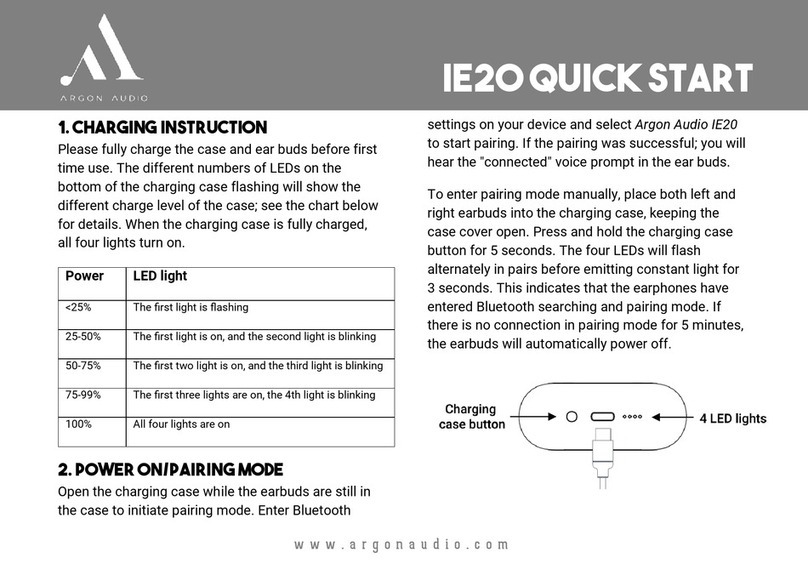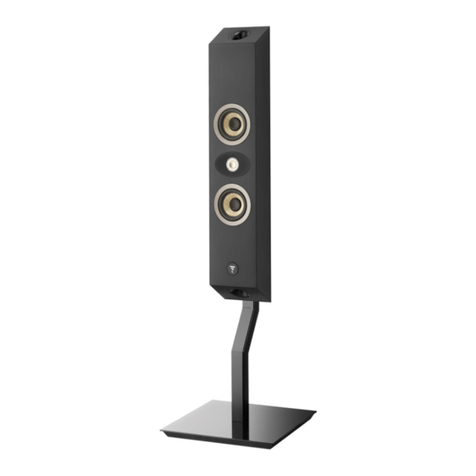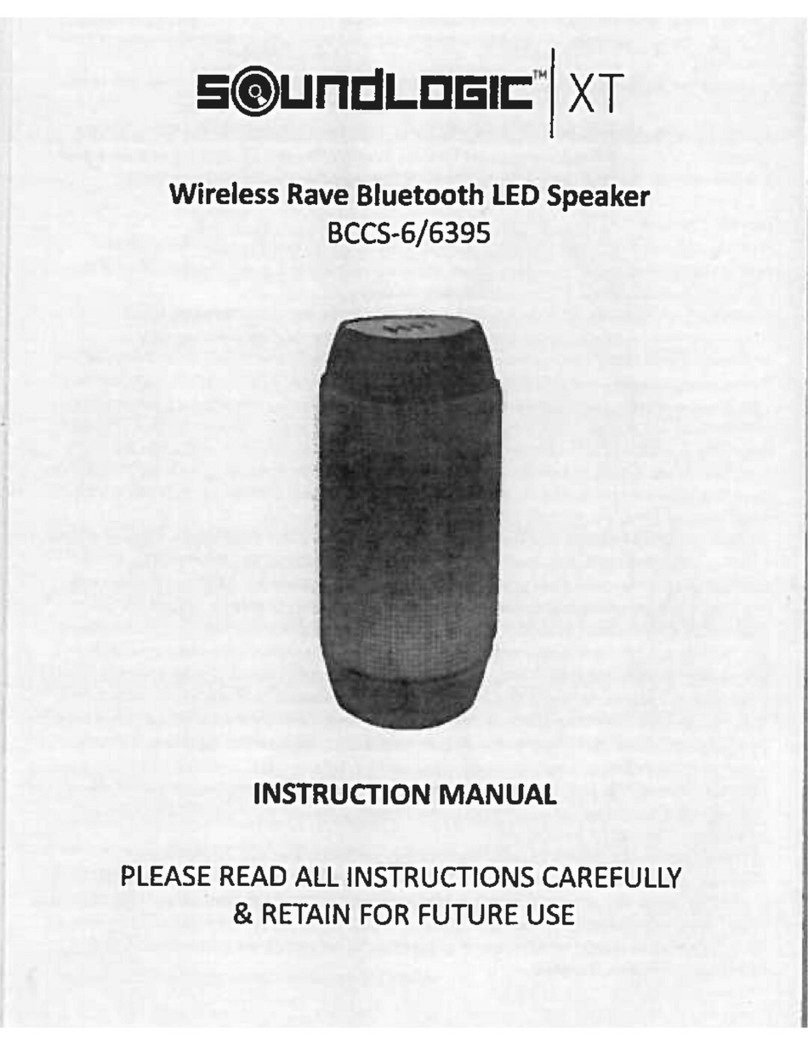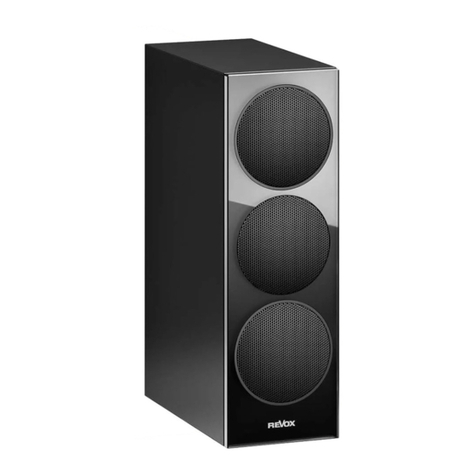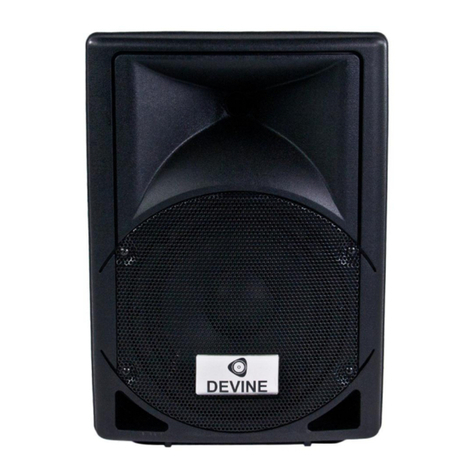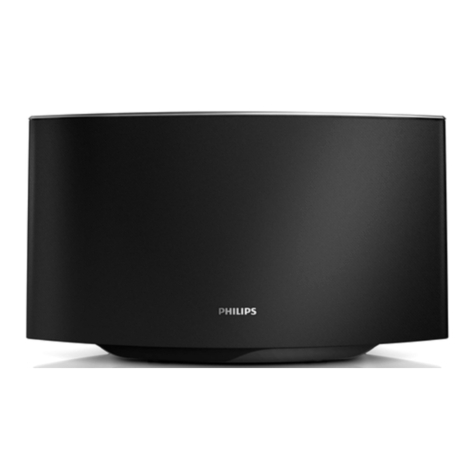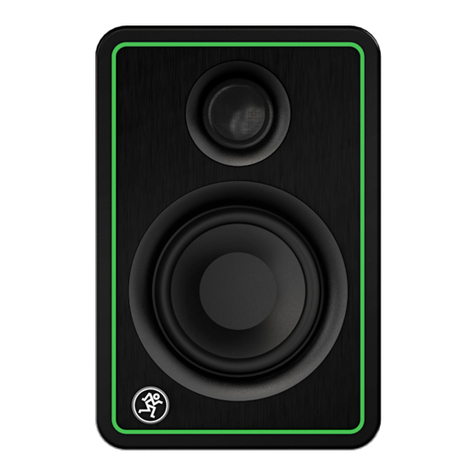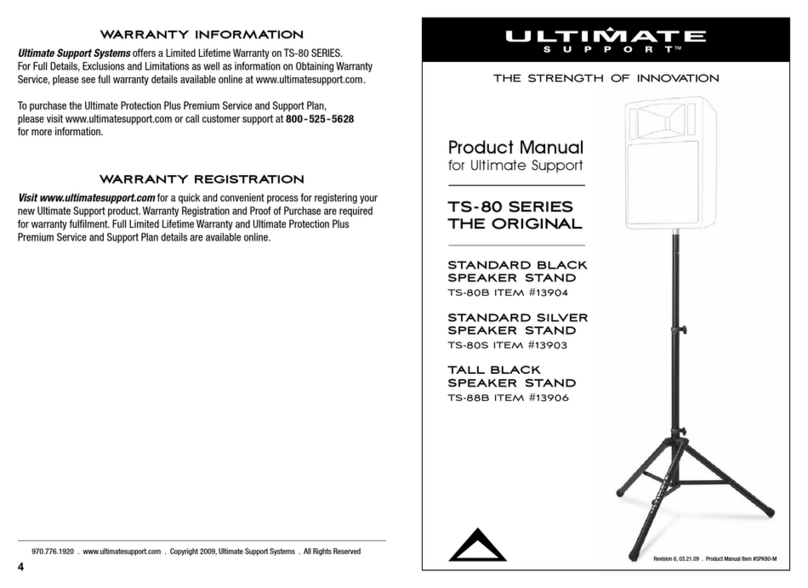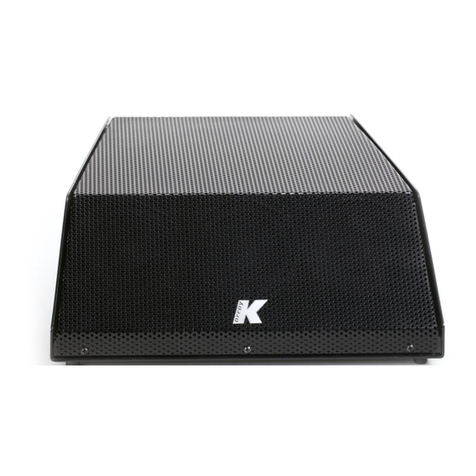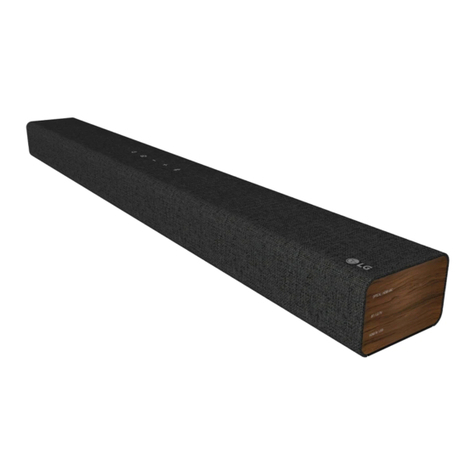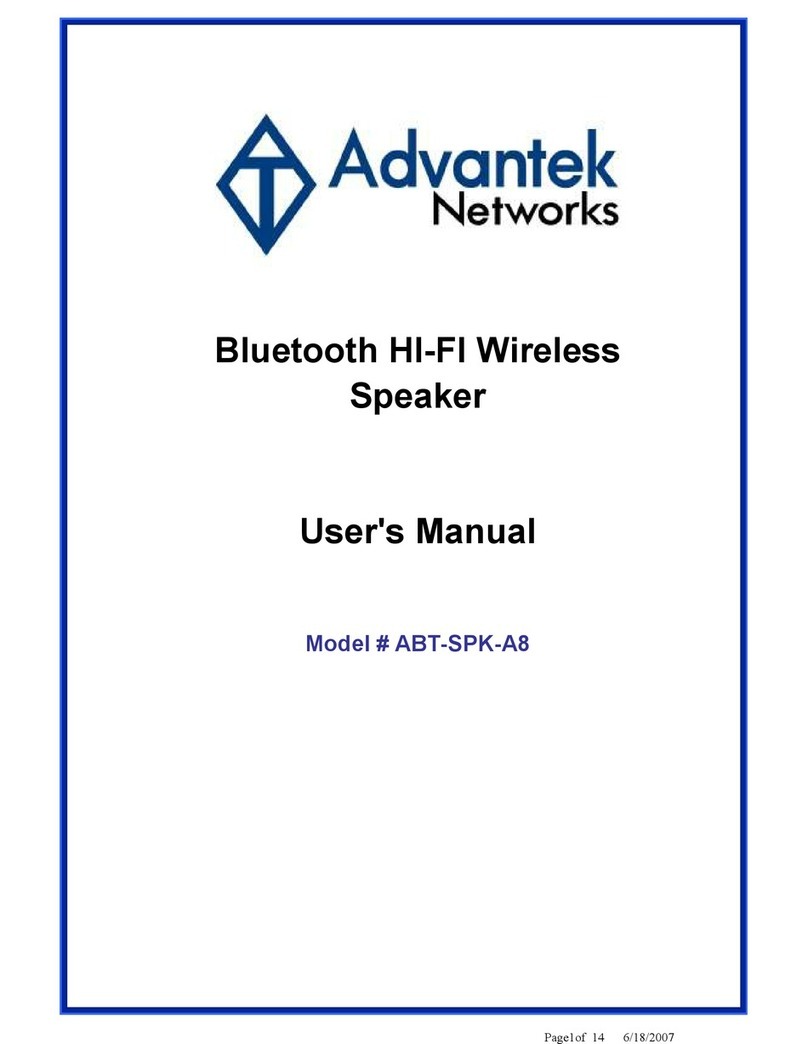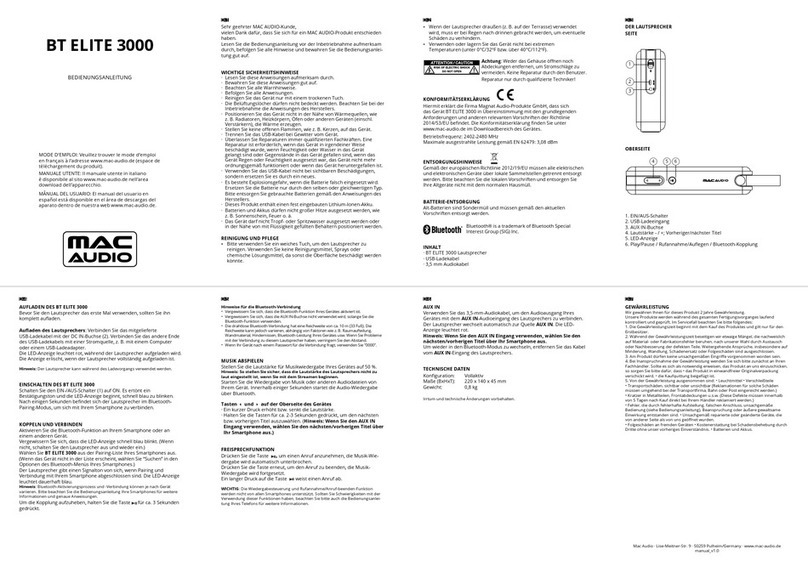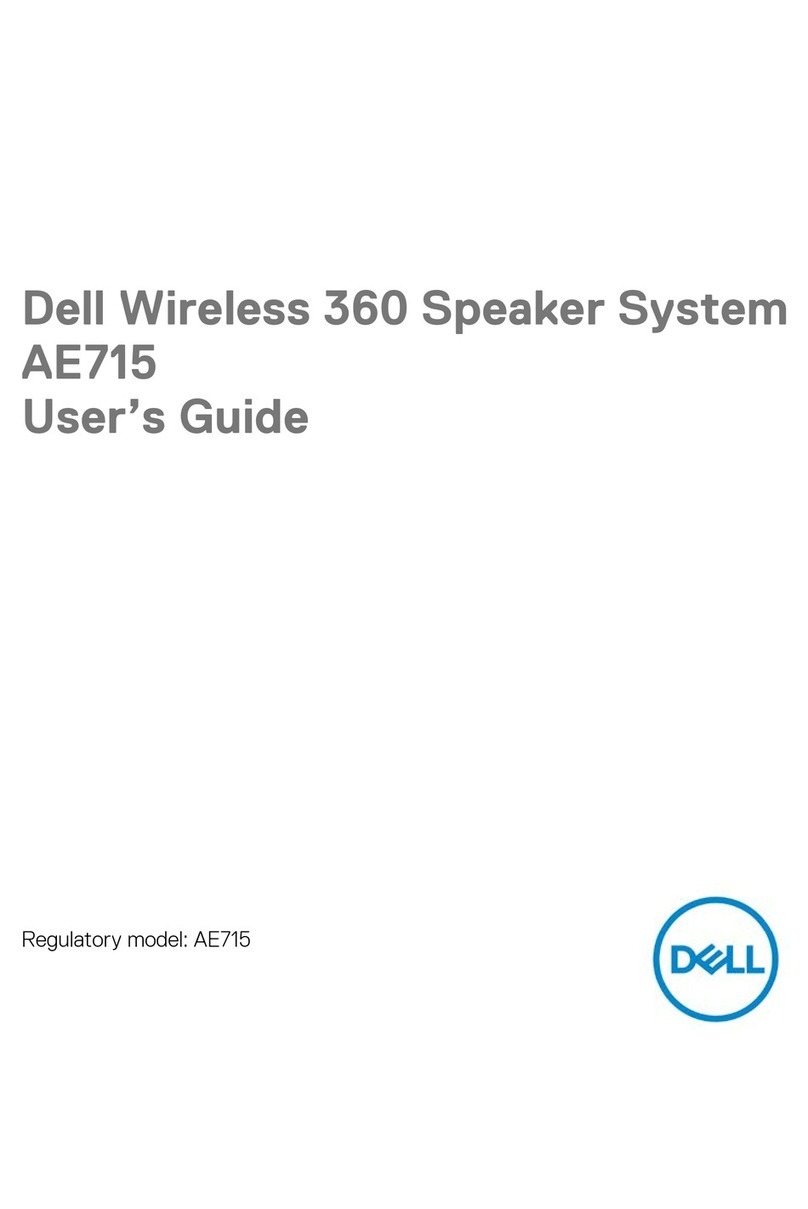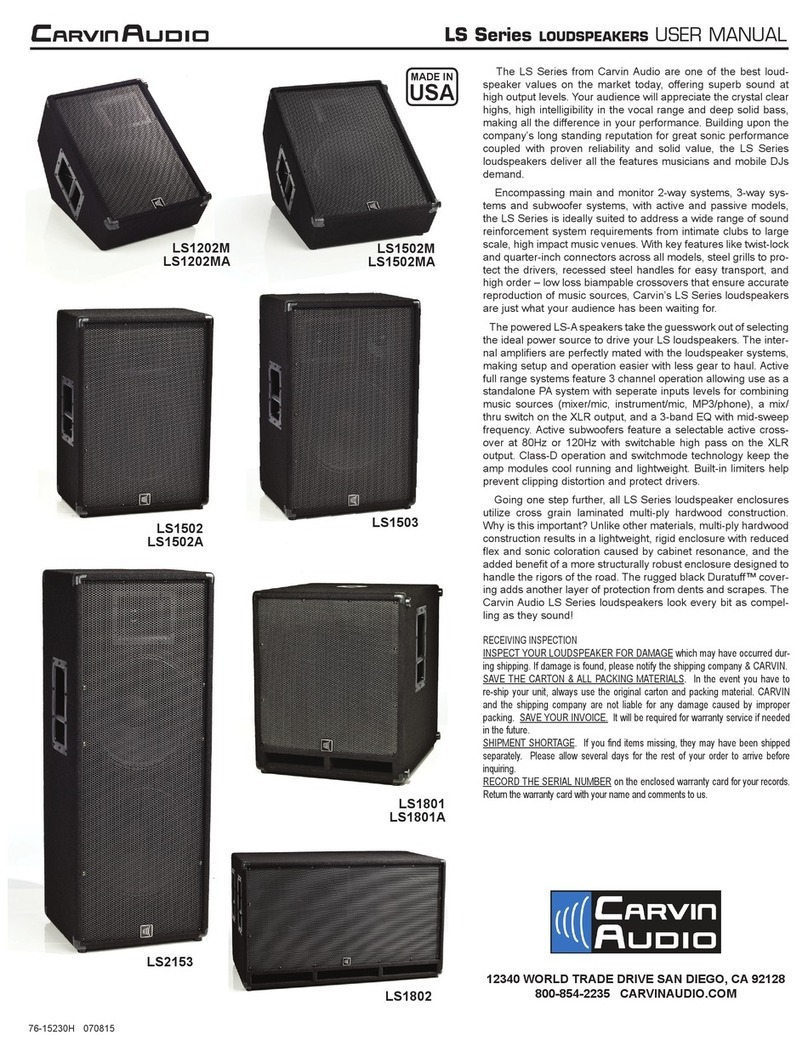Newton MC300IW User manual

MC300IW In-Wall LCR Loudspeaker
Installation and User Manual
™
®

2

3
INTRODUCTION
Thanks for choosing a Newton Series loudspeaker.
The MC300IW features the finest drivers and a
precision crossover network in a space-saving
in-wall format.
The Product Development Team at Cambridge
SoundWorks believes there is no better combination of
audiophile-level attention to detail and reasonable cost.
After Unpacking
Store the shipping carton and packing material for
future use and transport should you ever need to
return the speaker for service.
Inspecting For Damage
Examine each part carefully for shipping damage. If
there is any, do not install or use the system. Return
the speaker to the store or merchant where you made
the purchase or call Cambridge SoundWorks at 1-800
FOR-HIFI (1-800-367-4434) for assistance.
About This Manual
Care in speaker placement and installation pays divi-
dends in optimum enjoyment. This manual provides
tips and instructions to help you get the most from
your loudspeakers. Please read through it carefully
before proceeding with the installation.
Installing the MC300IW is straightforward and may be
performed by an experienced do-it-yourself homeown-
er. However, some familiarity with typical home con-
struction is necessary.
This manual assumes the installer possesses skill in
the proper use of hand and power tools, a knowledge
of local fire and building codes, and a familiarity with
the area behind the surfaces where the speakers are
to be installed.

4
If you do not posess the necessary skills or are other-
wise not comfortable with performing a speaker sys-
tem installation, we strongly recommend you rely on a
qualified home entertainment system installer. Contact
your dealer, or Cambridge SoundWorks for assistance
in selecting a suitable installer.
Note: Cambridge SoundWorks will not assume any
responsibility for the intrgrity of the attachment of the
speaker and itís mounting brackets to a wall or ceiling.
The quality of the installation is solely the responsibility
of the installer.
Cambridge SoundWorks is not responsible for any
damage resulting from the installation or installation
process, or due to wiring or materials used in the
installation.
Tools Required
1. Stud Finder
2. Pencil
3. Drill with 1/4" bit
4. Utility knife, jigsaw, drywall router, or other means of
cutting a hole in the mounting surface
5. Wire cutter and/or stripper for preparing
speaker wires
6. #1 Phillips screwdriver

USE AND PLACEMENT CONSIDERATIONS
5
The MC300IW is designed as an LCR loudspeaker.
This means that it is both ideal as a main Left and
Right channel loudspeaker, and equally suitable as a
horizontal center channel loudspeaker in a home the-
ater system. The compact MTM (Mid-Tweeter-Mid)
array, and crossover topology used in the MC300IW
allow it to be used both vertically and horizontally with
even dispersion. The MC300IW uses shielded magnet
assemblies, so that it may safely be built in to a cabi-
net or wall adjacent to a CRT based video monitor.
Because the MC300IW has very wide and uniform dis-
persion there is a great deal of flexibility in placement.
The ideal location should provide an unobstructed
path from the speakers to the listeners.
For the best effect used as a stereo pair for music
separate the speakers by at least four to eight feet.
The ideal separation is roughly equal to the distance of
the speakers to the listener. Try to place the left and
right speakers at a similar distance from the primary
listening position.
Similar rules apply when used as part of a home
theater installation. For the best home theater effect,
the speakers should be placed symmetrically around
the video monitor. The Center channel should be
placed as close to the monitor as possible, centered
directly above or below it.
To reduce the detrimental effects of side wall reflec-
tions on imaging, it is best to keep the speakers at
least 18" away from room corners or wall/ceiling borders.
The MC300IW has adequate bass range to be used
as a full range speaker in small rooms at moderate
levels. In home theater applications, or in larger
rooms, use of a subwoofer is strongly recommended.
See your Cambridge SoundWorks retailer or installation
professional for help in selecting a suitable subwoofer.

6
WIRING
The most difficult part of installing in-wall loudspeakers
is running the wire. Pre-wiring new construction is
strongly recommended, but this is not always possible.
Access to a basement, attic, or crawl space can simplify
the task of getting wires to the appropriate locations. If
you are a do-it-yourself homeowner, you may wish to
hire a professional for the purpose of running the
wires, even if you are planning on mounting the
speakers yourself.
The terminals used on the MC300IW loudspeakers will
accept up to AWG #12 speaker cable. We recommend
using the largest wire that is practical to run in your
installation. A minimum of AWG #16 should be used
for runs up to 50 feet, with AWG#14 for runs from 50-
100 feet. Runs longer than 100feet should use AWG #12.
Speaker
1
2
5
6
78
Grille
Screwdriver

7
1. Decide where you want the MC300IW speakers to
be placed. Using a stud-finder (or other means),
locate the nearest wall stud adjacent to this loca-
tion. Adjust your loudspeaker placement so that the
necessary wall cutout will not intersect the stud.
The resulting wall cutout should be at least 1/2"
away from any stud. When you are using the
MC300IW horizontally as a center channel there is
very little room for error.
2. Use the supplied template to scribe the area to be
cut out. It is recommended that a level or other
device be used to square the template to other
reference points within the room. While there is
some degree of freedom to adjust the speaker in
the hole, it is best to have a level mounting hole to
begin with.
3. Remove the cutout area using your preferred tool.
If you are cutting into a wall or ceiling with a plaster
skim-coat, drill a small hole at each corner first to
reduce the chance of a spreading crack.
Note: When cutting into a wall or ceiling, be careful
not to cut into items such as wiring, conduit, or
plumbing. It is often difficult to know exactly what
lies behind a cutout area. If you are not certain, first
make a smaller (3/4" – 1") inspection hole in the
center of the cutout using a drill. Using a flashlight
and a probe, inspect the area behind the wall
before making your final cut.
4. If your cut is on an outside wall, the wall will most
likely contain some form of insulation. Fiberglass
batting type insulation should be left in place, as it
is sonically desirable and will hold its own shape.
Blown-in cellulose or loose glass fibers must be
removed from the area behind the speaker, as they
will get agitated by the speakers’ vibration. If your
wall contains this type of loose insulation, remove it
from the area immediately behind the speaker and
replace it with a pad of fiberglass batting which is
at least 50% larger than the cutout in each direc-
tion. Also, if you are locating the speaker on an
inside wall, installing fiberglass batting in the space
between the studs is recommended, as it will
provide an improvement in sound quality.
INSTALLATION

8
5. If you have not already done so, run the speaker
wires to the source, or local room volume control.
6. Locate the speaker wires and strip 3/8" of insulation
from the ends. The stripped ends can be directly
inserted into the spring-loaded terminals on the
speakers once the terminal tabs are depressed.
Note: It is important to maintain the polarity of the
speaker wiring between all of the speakers in the
system. Speaker cable usually has some means of
identifying the two conductors, either by color, a
molded in stripe, or markings on the jacket.
Familiarize yourself with the method used for your
cable, and be consistent with all the connections
within the system. On the MC300IW loudspeakers,
the Red terminal is used for “+”, and the Black ter-
minal is used for “-”.
7. Locate the speaker in the cutout. Using a
#1 Phillips screwdriver, or #1 Philips bit in an elec-
tric screw gun, tighten the six Phillips screws that
are along each edge of the speaker. The x-swing
arms will extend and grip the rear of the mounting
surface. Be careful to not over-tighten, only moder-
ate force is necessary to secure the MC300IW in-
wall speaker to the mounting surface.
Note: A smooth, flat surface is desired for the most
secure installation and best air seal. If you are
mounting the MC300IW in-wall to a rough, uneven
surface such as stucco or brick laminate, use a
strip of foam gasket tape, or a strip of bead caulk,
along the back surface of the speaker’s mounting
flange. This will provide a good air seal and prevent
a loss of bass response. No gasket is needed on
smooth surfaces.
8. Finally, install the speaker grille. If desired, the
grille and frame may be painted to match the room
d
'
ecor. Use the piece you removed from the center
of the template as a painting mask to protect the
drivers and black baffle surface.

9
ABOUT AMPLIFIER POWER
The amount of amplifier power needed to drive the
MC300IW in-wall loudspeakers varies significantly with
such factors as the size of the listening room, its
acoustics, the type of music you listen to, and most
importantly, how loud you like to play it.
The MC300IW in-wall loudspeakers can safely be
used with the most powerful amplifiers and receivers
designed for home listening, as long as these compo-
nents are used within reasonable limits. However, the
distortion caused by overdriving either the speaker or
associated equipment can cause damage, even if the
amplifier or receiver’s power is technically within the
capabilities of the speaker.
If, at a given volume level the sound becomes “grainy”
or “gritty”, you may be overdriving the amplifier or
receiver. This type of distortion is potentially damaging
to tweeters, even from a low powered amplifier. Back
off on the volume control until these symptoms disap-
pear. If this is not sufficiently loud for your needs, you
may require a more powerful amplifier. Contact the
retailer where you purchased your loudspeakers, or a
Cambridge SoundWorks audio expert for advice on
how to best satisfy your needs.
Also, keep the volume turned down when connecting
or disconnecting components in order to prevent dam-
age from strong, non-musical transients. This will help
protect your ears as well as the speakers.

10
If you suspect that there is a problem with your speak-
ers, contact the retailer where they were purchased, or
Cambridge SoundWorks, who will help you track down
the problem. If together you agree that there is some-
thing wrong with your MC300IW in-wall loudspeakers,
they should be returned to the retailer where you
bought them. Mail-order and Internet retailers will gen-
erally require a Return Authorization Number. Products
purchased from a Cambridge SoundWorks store may
be returned directly to the store where they were pur-
chased, or if you are no longer near a Cambridge
SoundWorks store you may call us at 1-800-FOR-HIFI
for a factory Return Authorization. Do not return the
MC300IW in wall loudspeakers, or any parts without
first obtaining a Return Authorization.
IN CASE OF DIFFICULTY

MC300IW
Speaker Type: 2-way, infinite baffle
Woofer: 2" x 4"
Tweeter: 25mm silk dome
Frequency range: 65-20,000Hz
Recommended Amplifier
Power Range: 25W – 150W RMS
Sensitivity (2.83V @ 1meter): 89dB
Nominal Impedance: 8-Ohms
Overall dimensions (HxWxD): 14" x 6 1/2" x 3"
Mounting Hole dimensions (HxW): 12 3/4" x 5 3/4"
Mounting depth: 2 5/8"
SPECIFICATIONS
6 1/2" 5 3/4"
(Cut out)
2 5/8"
12 3/4"
(Cut out)
14"

P81-1940
CAMBRIDGE SOUNDWORKS, INC.
26 Dartmouth Street, Westwood MA, 02090
Telephone: 1-800-367-4434
Fax: 1-617-527-3194
A Company
Table of contents
